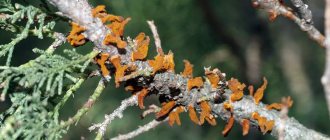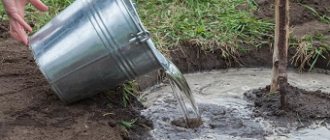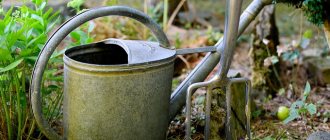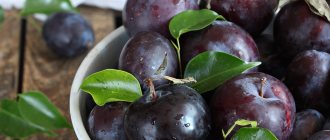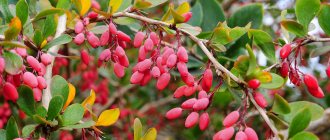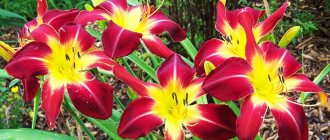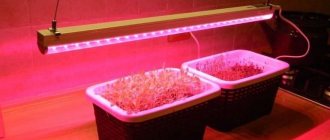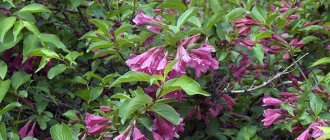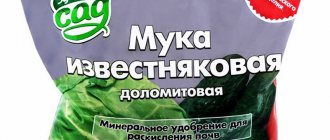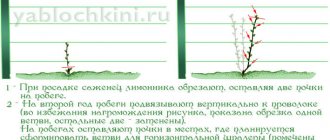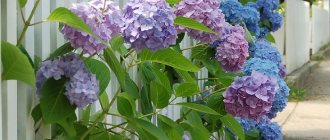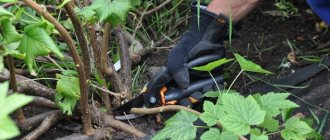Pear rust: description
It is not difficult to recognize a fungal infection even in the initial stages of its harmful activity.
Causes of infection and factors influencing spread
The pathogenic fungus Gymnosporangium sabinae, which causes rust infection, most often settles on juniper, as well as on some other coniferous plants. It is juniper that becomes the first carrier of infection. Moreover, it can be located far outside the garden. Fungal spores are spread by wind and water, often over very long distances. One juniper bush infected with rust can infect trees and shrubs within a radius of up to 50 km.
A feature of the spread of this type of fungus is cross-contamination. The disease is not transmitted from pear to pear or from one juniper bush to another. The spores that ripen on the leaves of the fruit tree at the end of summer fly away and infect the juniper, which, in turn, infects other fruit trees the following spring.
Signs of defeat
The first symptoms of pear infection are visible in early spring, when the leaves bloom. On the upper part of the plates, red-orange spots are clearly visible, often bordered by a red stripe.
The second sign indicating a pear disease is thickening of young shoots and slowing of their growth.
Cracked bark of the trunk and large branches is the third main sign of the destructive work of the puccinia fungus.
How the disease develops
Rust develops quickly. In the first few days, the lesion appears in the form of small spots that grow, covering the entire surface of the pear leaves. At the next stage, gray stains appear, which are often mistaken for mold.
Further, on the lower part of the plates, cone-shaped tubercles with a pointed tip are formed, painted in a characteristic red-brown, rusty color, which gave the name to the disease. The pear becomes dangerous for its neighbors: in these formations, punctuation spores ripen, which in a short time will spread throughout the area and begin to infect other plants.
The final stage is when the diseased leaves dry out and fall to the ground, introducing the remaining pathogens into it. With significant damage, the pear loses its immunity and dries out before autumn.
Fungal spores ripen several times per season and are easily carried by the wind. Garden crops require constant attention to prevent further rust damage.
Consequences
Massive infection of pear trees can lead to very serious consequences:
- premature leaf fall;
- inhibition of shoot growth and further drying out;
- crushing of fruits, deterioration of their taste and appearance;
- crop reduction;
- reducing the resistance of the pear tree to other diseases and frosts.
In the most advanced cases, the pear completely stops bearing fruit and dies.
Why is rust dangerous for pear trees?
The disease affects most of the crown, the photosynthesis process in the leaves is disrupted, they turn yellow early and fall off. The affected shoots thicken, bend and stop growing, some dry out. The tree weakens, and if the situation develops unfavorably, it freezes out in winter. Rust often affects pear fruits. In the southern coastal regions, due to this disease, crop losses range from 50 to 100%; in more northern regions the situation is little better.
Favorable conditions for rust development
The peculiarity of rust fungus is that the ideal conditions for its development are exactly those that the pear requires: heat and moisture. Nighttime drops in temperature, characteristic of the last third of summer, contribute to the formation of winter spores, which wait out the cold and become more active with the onset of spring.
Abundant rainfall or frequent sprinkling of the fruit pear accelerates the course of the disease and creates a favorable environment for the development of a significant number of spores.
The third favorable factor is dense plantings, pruning errors or neglect of this procedure. Poor ventilation is a friend of fungal diseases of all types.
Experienced gardeners also pay attention to the condition of the tree trunk. Abundantly growing weeds, even if they do not get sick themselves, readily become a temporary shelter for the rust pathogen. When the first signs of disease appear, be sure to remove and burn the mulching layer (if there is one). Then the soil is dug up and spilled with a 1% solution of copper-containing substances.
Joint planting of fruit trees and plants that quickly and easily become infected with rust greatly increases the danger.
Where does rust come from?
The causative agent of rust in fruit trees is the pathogenic fungus Gymnosporangium sabinae. It is interesting that for this fungus the pear is only an intermediate “place of residence”. The main “host” of the parasite is juniper. Having settled on this coniferous shrub, the gymnosporangium forms a mycelium in the first year. The next season, fungal spores ripen on the juniper branches, which the wind carries around.
It is not difficult to identify diseased shrubs: their needles turn orange and look as if they are scorched. Spores that fall from juniper to pears infect fruit trees with rust. In addition to pears, hawthorn, apple, quince and some other garden crops are also susceptible to this disease.
Treatment and processing of wood
The affected shoots stop growing, become noticeably thicker, become covered with red dots on the leaves, sometimes yellow in color, and dry out. With minor lesions, the bark of the trunk and branches may crack.
This is interesting: Methods for effectively treating the garden in the fall from diseases and pests
A radical measure is to remove leaves and branches
The most drastic method of treatment is to remove and burn the affected material (leaves, branches). It can be used independently and in combination with other techniques.
How to process chemically
Juniper is sprayed with special preparations in early spring - use triforin (saprol) in a timely manner, and many problems can be avoided. Preventive treatments are repeated every week or 10 days. Systemic fungicides are also actively used in the treatment of rust. The first treatment is carried out after the buds swell in the spring, the second in the fall, when all the leaves have fallen. The product is urea solution 5%. Fungicides should be used regularly - a total of 4-5 times per season.
The first antifungal treatment is always carried out before the buds swell.
In early spring, preventive treatments using copper bleach or Bordeaux mixture 1% are effective against rust and fire blight. It is advisable to do them when stable positive air temperatures have established, and the weather is dry and quite cool. Do the second spring spraying at the beginning of pear flowering, the third immediately after its completion, and the fourth 10 days later.
Preparations for spraying
The following drugs help in the fight against rust:
- Cuproxate (or copper sulfate) - from 4 times a year at the rate of 50 ml of solution per bucket of water.
- Polisher is another effective rust remover. Apply treatments at least 4 times a year, namely at the beginning of the swelling of the buds, during the formation of buds, after the end of flowering, and on the forming small fruits. Do the last spraying no earlier than a couple of months before harvesting.
- Colloidal sulfur - 5 times per season, namely before the leaves appear, before flowering, after flowering, during fruit formation, after leaf fall. Dosage – 40 g of substance per bucket of water.
- Bayleton (or triadimefon) is a curative fungicide that can be used 5-6 times per season at the rate of 10 g per bucket of water. The first treatment is done when signs of the disease are detected, subsequent treatments are done at intervals of 2 to 4 weeks.
- Skor is a universal fungicide, effective in the fight against scab, rust and other pear diseases. Treatments are needed three times a year - before foliage growth, before flowering and after it. Use 20 ml of Skor per bucket of water, the effect of the drug lasts up to 3 weeks.
At the beginning of March, inspect the pears, cut off all affected shoots, and cut off the branches, taking 5-10 cm of healthy tissue.
How to get rid of it using folk remedies
Before use, pruning tools must be thoroughly wiped with alcohol, the cut areas must first be treated with copper sulfate, and then covered with varnish. In the autumn, when the leaves fall off, spray the pear with a urea solution - the optimal concentration is 700 g per bucket of water. Loosen the soil around the tree, water it and dig it thoroughly.
Apply fertilizers with phosphorus and potassium in a timely manner, and remove fallen leaves. But the use of nitrogen during rust treatment should be avoided. If possible, remove the juniper or protect the pear from it.
Other folk remedies for rust are an infusion of wood ash or slurry. Their effectiveness is low, but for prevention it is an ideal option.
Fungicides for pear rust
Rust fungus spores are killed when sprayed with fungicides designed to combat this particular disease. There are many such remedies that are used to treat plants from several fungal diseases at once. For example, from scab, powdery mildew, rust. If treatment with such anti-scab drugs is carried out, then there is no need to treat the tree against orange spots.
Each product has its own calendar for its effective use, which must be followed, because measures to combat pear rust in the fall differ from those in the spring.
Advice! To prevent the disease from becoming resistant to fungicides, they must be alternated, without using the same one several times in a row.
How to fight rust on a pear with copper-containing preparations
Copper-based products have long been used in gardening to combat various fungal plant diseases, including orange spots. “Bordeaux liquid”, “Bayleton”, “Strobi”, “Raek” are widely used preparations that are harmless to beneficial insects and warm-blooded animals. They are often compatible with pesticides, but not all fungicides can be used.
The treatment of fruit trees with these preparations should be carried out using a fine spray method for more effective use of the fungicide. In this case, liquid does not drain from the leaves. She manages to influence the spores of rust fungus.
How to treat yellow spots on pear leaves with colloidal sulfur
Colloidal sulfur is a very effective remedy against rust spots on pear leaves. You can buy it in many agricultural stores. Before use, prepare a special solution by dissolving 40 g of powder in 10 liters of water. Colloidal sulfur dissolves rather poorly, so before mixing it must be very well ground, then the composition for spraying will be a water-dispersion mixture that can be used for spraying.
A total of 5 treatments of pears with colloidal sulfur are made:
- In the spring, before the growing season begins.
- Before the flowers appear.
- Immediately after flowering ends.
- During the period of fruit formation.
- In autumn, after the harvest and the end of leaf fall.
This is interesting: Caring for chrysanthemums in a pot: how to care after purchase and after flowering
Important! Sulfur itself does not pose a danger to humans, but its compounds are harmful. When working, it is necessary to use personal protective equipment: gloves, goggles, respirator.
↑ Symptoms of pear tree rust damage
The first signs of rust in the form of small bright brown dots on leaves and stems appear in July or mid-August. The spores that have penetrated the leaves begin to multiply. The surface of pear leaves becomes lumpy, with growths containing fungal spores. Infected leaves dry out earlier than others and fly off the tree.
If the pear is not treated for rust, then next year the disease will appear in April or early May. When the pear blossoms, characteristic rust-colored spots will appear on the leaves. And in mid-summer, the spots will reach a size of 1.5-2 cm. Their shade will change to garnet or yellow-brown with black dots inside the leaf. The disease progresses, the bark begins to crack and growths are visible on the shoots.
What preparations should be used to spray a pear against rust?
To treat pear trees affected by rust, it is recommended to use fungicides, the main components of which are copper and sulfur. Let's look at the 5 most effective drugs:
The drug "Polychom" brand "Iskra"
Protective contact fungicide, a chemical mixture of 60% metiram and 20% copper oxychloride. Release form: suspension 0.4%. An effective drug in the fight against rust, scab, moniliosis, white spot, black cancer. The frequency of processing is no more than 5 times.
- Advantages: Non-toxic to beneficial insects and birds. A safe preparation for plants, has a beneficial effect on plants, increases productivity.
- Disadvantages: It is prohibited to use in the sanitary zone around fishery reservoirs.
Bordeaux liquid of the Green Belt brand
Broad-spectrum fungicide. The active ingredient is copper sulfate. Release form: water-soluble powder. It is used to combat rust, scab, moniliosis, spotting. The frequency of processing is no more than 6 times.
- Advantages: Not dangerous for beneficial insects, birds and plants. Compatible with pesticides.
- Disadvantages: Incompatible with the vast majority of fungicides, especially those that are destroyed in an alkaline environment.
The drug "Baleiton" brand "Green Belt"
Systemic fungicide to combat mainly rust and powdery mildew on fruit trees. Active ingredients: triadimefon, copper sulfate. Release form: powder. The frequency of processing is no more than 2 times.
- Advantages: Not dangerous for beneficial insects. A safe preparation for plants, has a beneficial effect on plants. High compatibility with other drugs. Not washed away by precipitation.
- Disadvantages: It is prohibited to use in the sanitary zone around fishery reservoirs. Moderately toxic to warm-blooded animals. Causes resistance, requires a change in drug.
The drug "Strobi" brand "BASF"
A new generation fungicide, the active ingredient is strobilurin A. Designed to protect fruit trees from diseases such as rust, powdery mildew, and late blight. Release form: water-soluble granules. The frequency of processing is no more than 3 times.
The drug "Strobi" brand "BASF"
Advantages: not dangerous for beneficial insects and warm-blooded animals. It is compatible with a huge number of drugs. Not phytotoxic. One of the rare drugs that can be used during the flowering period of fruit-bearing trees. Not addictive. Not washed away by precipitation.
The drug "Raek" brand "August"
Systemic fungicide, active ingredients difenoconazole, copper sulfate. Designed to combat rust, scab, powdery mildew, and late blight. Release form: emulsion. The frequency of processing is no more than 4 times.
- Advantages: Not dangerous for beneficial insects. Not phytotoxic. High compatibility with other drugs. Not washed away by precipitation.
- Disadvantages: It is prohibited to use in the sanitary zone around fishery reservoirs. Moderately toxic to warm-blooded animals.
The table shows the effectiveness indicators of the above drugs, as well as the consumption of drugs and the optimal timing of their use.
| Drug name | Drug consumption | Time spending | Efficiency |
| "Polychomus" | 15 g per 10 liters of water | 1. During the period of exposure of inflorescences (“green cone”); 2.When in full bloom; The 3rd treatment is carried out depending on the conditions, but not later than the end of flowering; 4th and 5th – 10-12 days after the last treatment. | With a full series of processing up to 98% |
| Bordeaux liquid | 20l per 100 m2. | 1.When the buds open; 2. According to the “white bud”; 3. After harvest. With an interval of 5-6 days. | Up to 90% when used with other drugs |
| "Baleiton" | 10 g per 10 liters of water | 1.When the buds open; 2. According to the “white bud”. | Up to 95% when used with other drugs |
| "Strobe" | 15 g per 10 liters of water | 1. With swelling of the kidneys; 2.When in full bloom. | Up to 95% when combined with drugs containing polycarbocin. |
| "Raek" | 2 ml per 10 liters of water | 1. During the period of exposure of inflorescences (“green cone”); 2. According to the “white bud”. 3. After flowering with an interval of 10-12 days. | Up to 95% when combined with drugs containing copper and polycarbocin. |
Bordeaux liquid for treating pears against rust
Ready-made solutions must be applied using a fine spray method, which will allow most of the preparation to remain on the leaves of the trees. A fine spray prevents the drug from draining from above-ground organs and promotes rapid absorption of the solution.
Consequences of inaction when leaves on a pear turn yellow
The danger of orange spots on pear leaves is determined by the sources of their occurrence. If seasonal changes are not the cause, plants and crops can be seriously damaged by a gradually spreading infection.
There are spots on the leaves on the orchid - what to do?
The capture of pear by rust leads to disturbances in the processes of photosynthesis in the foliage and a rapid weakening of the crop. The fruits will become tasteless and small, and with a prolonged illness, over several years, the wood will begin to be damaged and become covered with corresponding growths.
Loss of leaves leads to depletion of the crop, weakened immunity and vulnerability to pests and diseases. The frost resistance indicator decreases, even in the middle zone there is a possibility of shoots being damaged by frost.
A crop that has been ill stops bearing fruit or produces a minimal harvest with small and tasteless fruits. To reduce the risk of infection, gardeners prefer to plant rust-resistant varieties in their garden plots and check the adequacy of the supply of nutrients.
Important! The risk of the disease increases in the garden where Cossack juniper is grown. The plant is one of the main sources of fungal infection of pears and apple trees.
Rust on juniper
Features of treatment at different times of the year
Rust treatment begins in early spring, when the average daily temperature is above zero. Chemical treatment is suitable for this period. They are also used in late autumn.
New generation fungicides belong to biologically active substances. They are not used if the air temperature is below 15 °C. They are used from May to September.
In the hot summer, when the thermometer often exceeds +30 °C, pears are sprayed with folk remedies, choosing twilight hours for treatment.
Rust-resistant pear varieties
Pears are susceptible to diseases of various origins; the most common pear diseases include rust, moniliosis and scab. In the table we look at the varieties of pears that are most resistant to rust:
This is interesting: Strawberry variety Queen Elizabeth - description and characteristics
| Julienne | Features of the variety |
| "Bere Boek" | The fruits are large, bottle-shaped, brown-golden in color. In the 5th year it produces up to 100 kg of fruit. Winter-hardy. |
| "Autumn Dekanka" | The fruits are medium-sized, round in shape, light yellow in color. In the 5th year it produces up to 70 kg of fruit from one bush. Winter-hardy. |
| "Summer William" | The fruits are medium-sized, pear-shaped, yellow with blush. In the 5th year it produces up to 150 kg of fruit from one bush. Winter-hardy. |
| "Cure" | The fruits are medium-sized, pear-shaped, whitish-yellow in color. In the 5th year it produces up to 80 kg of fruit per bush. |
| "Clapp's Favorite" | The fruits are large, round, yellowish-green. In the 7th year it produces up to 60 kg per bush. |
Spiritual
The tree is medium-sized, the crown is of medium density, wide-pyramidal. The fruits are green, with a brick-red blush, medium-sized, pear-shaped. The skin is smooth and shiny. The pulp is white, juicy, oily, with a pleasant sweet and sour taste. Medium-winter-hardy, high-yielding variety. Resistant to bacterial cancer and moderately resistant to scab.
| Entry into fruiting | Tree height (m) | Fruit weight (g) | Harvest | Shelf life (days) |
| for the 4th year | 3-5 | 140 | August – early September | up to 45 |
Severyanka
The tree is medium-sized, the crown is of medium density, wide-pyramidal. The fruits are yellow with green spots, small, truncated-conical, non-one-dimensional. The skin is dense and dull. The pulp is creamy, juicy, medium density. A highly winter-hardy, high-yielding variety, resistant to most pear diseases.
| Entry into fruiting | Tree height (m) | Fruit weight (g) | Harvest | Shelf life (days) |
| for 3-4 years | 3-5 | 80-120 | beginning – mid August | 14 |
Tikhonovka
The tree is medium-sized, with a wide-pyramidal or rounded crown (depending on age). The fruits are green, small, hard, round-broad pear-shaped or ovoid-pear-shaped. The skin is dense and tough. The pulp is yellowish, juicy, crispy. Winter-hardy, unpretentious, high-yielding variety, resistant to pear diseases.
| Entry into fruiting | Tree height (m) | Fruit weight (g) | Harvest | Shelf life (days) |
| for 6-7 years | 3-5 | 60-90 | September | up to 270 |
In memory of Yakovlev
The tree is small, the crown is medium dense, rounded. The fruits are light yellow with a faint pink blush, medium size, broadly pear-shaped. The skin is thin, shiny, semi-oily. The pulp is creamy white, juicy, semi-oily. Winter-hardy, high-yielding variety, resistant to diseases.
| Entry into fruiting | Tree height (m) | Fruit weight (g) | Harvest | Shelf life (days) |
| for 3-4 years | until 3 | 120 | September October | up to 120 |
Why do pear leaves become covered with yellow spots?
During the growing season, the standard foliage color varies from green to dark green. The appearance of extraneous stripes or spotting indicates preliminary preparation of trees for the winter season or health problems.
Rust on the pear
Frequent sources of anomalies include insufficient supply of nutrients or damage to the crop by pathogenic microorganisms that provoke the formation of “rust”. In the first option, the gardener must check the amount of fertilizer applied and the presence of nitrogen, iron, zinc and manganese in them; in the second, carry out therapeutic procedures to destroy the source of pathology.
To clarify the preliminary diagnosis, it is necessary to take into account the symptoms:
- Lack of iron - manifests itself as a whitish color of foliage with yellowness at the edges. With a partial deficiency of the element, the veins on the leaves remain green, without a visible change in the main color.
- Manganese deficiency is determined by yellow-green dots scattered on the surface of the leaf blades.
- Insufficient supply of zinc provokes thinning of the foliage and a decrease in size. In some cases, yellowness forms at the ends of young shoots.
Orange spots on a pear can occur due to a fungal infection. An extraneous bright orange color appears in summer days or early autumn, the affected areas feel sticky to the touch. Ripe spores quickly migrate through other garden plants with the help of insects, infecting healthy crops.
The appearance of non-standard shades of sheets in spring is a symptom of the development of scab. Over time, the foliage acquires brownish or olive tones in areas of infection. The disease spreads only in high humidity.
Important! Gardeners recommend promptly removing fallen leaves, preventing the development of fungal pathologies in cultivated varieties.
Sources of the problem
Unresistant varieties
In regions where there is a high risk of trees becoming infected with rust, it is not recommended to grow varieties that are sensitive to the pathogen. These include:
- "Favorite";
- "Klappa";
- "Bere Ardanpon";
- "Cure";
- "Winter Dikanka"
Experts include areas where juniper is widespread in the natural environment - the most common cause of rust infection in pears.
No matter how successful the fight against rust fungus is, it is important for gardeners not to forget that it is impossible to completely get rid of it here and now. It will take several years of constant care for the affected pears, regular preventive treatments, and strict adherence to the general rules of plant farming in order to achieve a complete recovery of the garden.
The causative agent of the disease is rust
Rust is a fungal disease that spreads through spores. The pathogen mainly affects leaves, less often shoots, pear fruits, branches may swell (this is how the active processes of fungal reproduction manifest themselves). This is an infectious disease that can quickly spread to neighboring trees, including fruits. Read how to treat scab on an apple tree here.
The main tree that carries rust is juniper. It is also the first to be affected during rust epidemics.
In the spring months, fungal spores are carried by rain or wind, as a result of which all trees located within a radius of 50 km from the carrier of the disease are affected. How to properly treat sooty fungus is described in this article.
It is very difficult to completely cope with rust; the ideal option for pears is rather correct agricultural technology as a preventative measure - fruit trees should be planted away from juniper, and the likelihood of infection in this case will decrease significantly. The problem is that this is not always possible - juniper can grow in your neighbors, and you will not force them to refuse to plant this crop.
You can learn more about pear diseases from this article.
Preventive measures
In the fight against fungal rust, mandatory attention should be paid to two types of trees - juniper and pear. Constant inspection of the juniper on the site should be carried out regularly. When the first signs are detected, dry branches and leaves should be immediately cut off and burned.
Preventive treatment of pear and juniper in the area before brown spots appear on the leaves is the most far-sighted and effective measure. Such measures using fungicides begin in the spring and are carried out at regular intervals throughout the growing season. They coincide with the treatment for scab and powdery mildew:
- The first time pears are sprayed is carried out in the spring, 2 weeks before flowering. At this time, basidiospores have not yet had time to colonize the pear. Fitosporin-M is recommended.
- The second treatment of fruit trees is carried out after flowering. This is the time for active dispersal of fungal spores. The chemicals will kill them without allowing them to spread to the pear.
- The third preventive measure is repeated approximately 20 days after the second, when ovaries measuring 3-4 cm in length have already appeared.
These actions will protect pear plantings not only from fungal rust, but also from other diseases. Preventive measures also include timely application of fertilizers to increase the immunity and stability of the pear. During the summer, you need to periodically pour diluted wood ash under the root - 500 g per 10 liters of water.
Attention! If the garden plot is still young and is just being populated with new plants, it must be remembered that the proximity of pears and junipers on it can be detrimental to the fruit tree.
Features of the development of the disease
Orange spots of fungus can appear on pear leaves quite unexpectedly, especially if the plantings are not inspected regularly. Many gardeners simply do not pay attention to small lesions on foliage, which is completely in vain. At the end of summer, growths containing mature fungal spores form on the reverse side of infected leaves. The wind can carry them tens of kilometers away, so the source of infection will constantly increase.
Every year the disease progresses, there will be more and more affected leaves. Over time, this can even lead to the death of the tree if no measures are taken.
